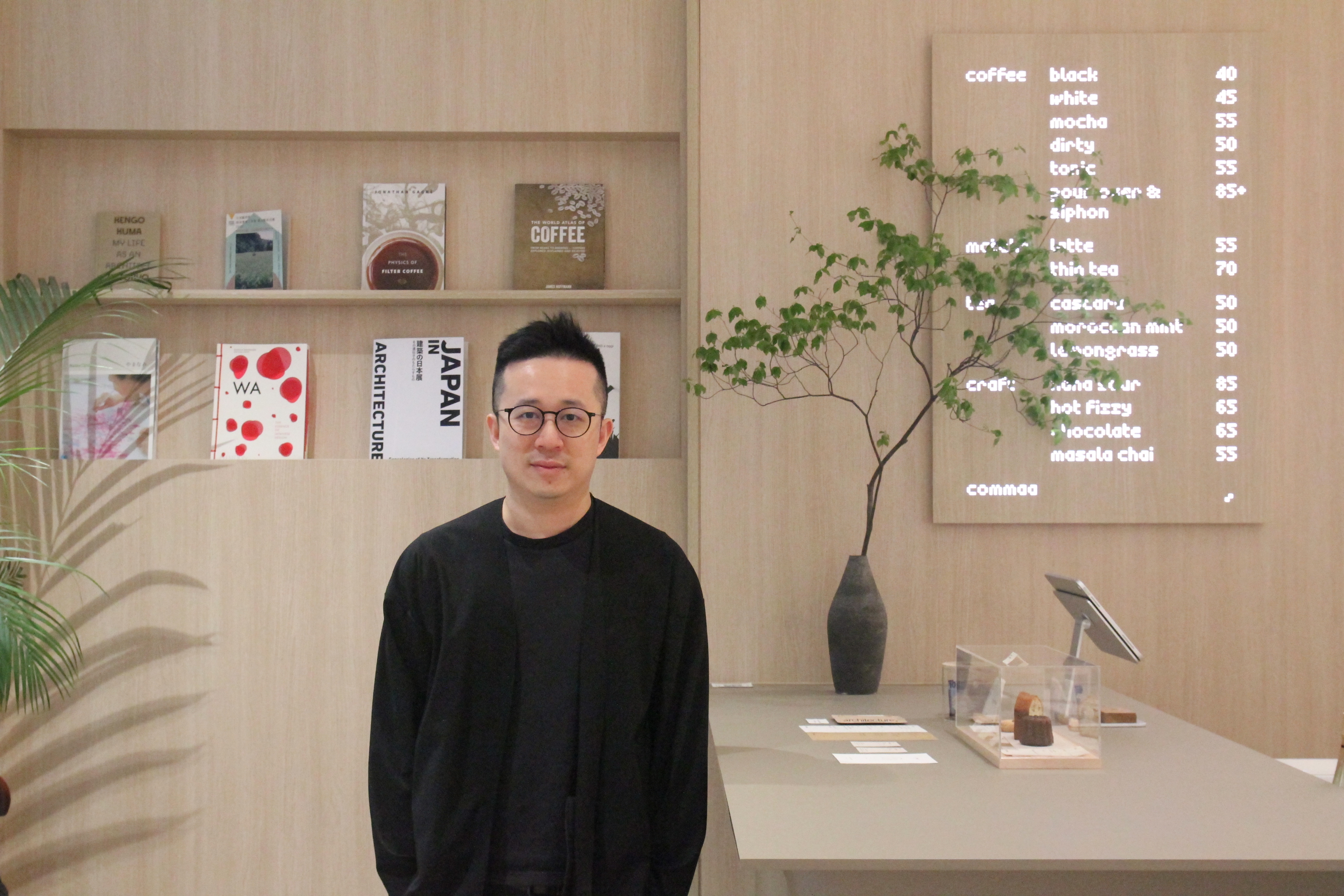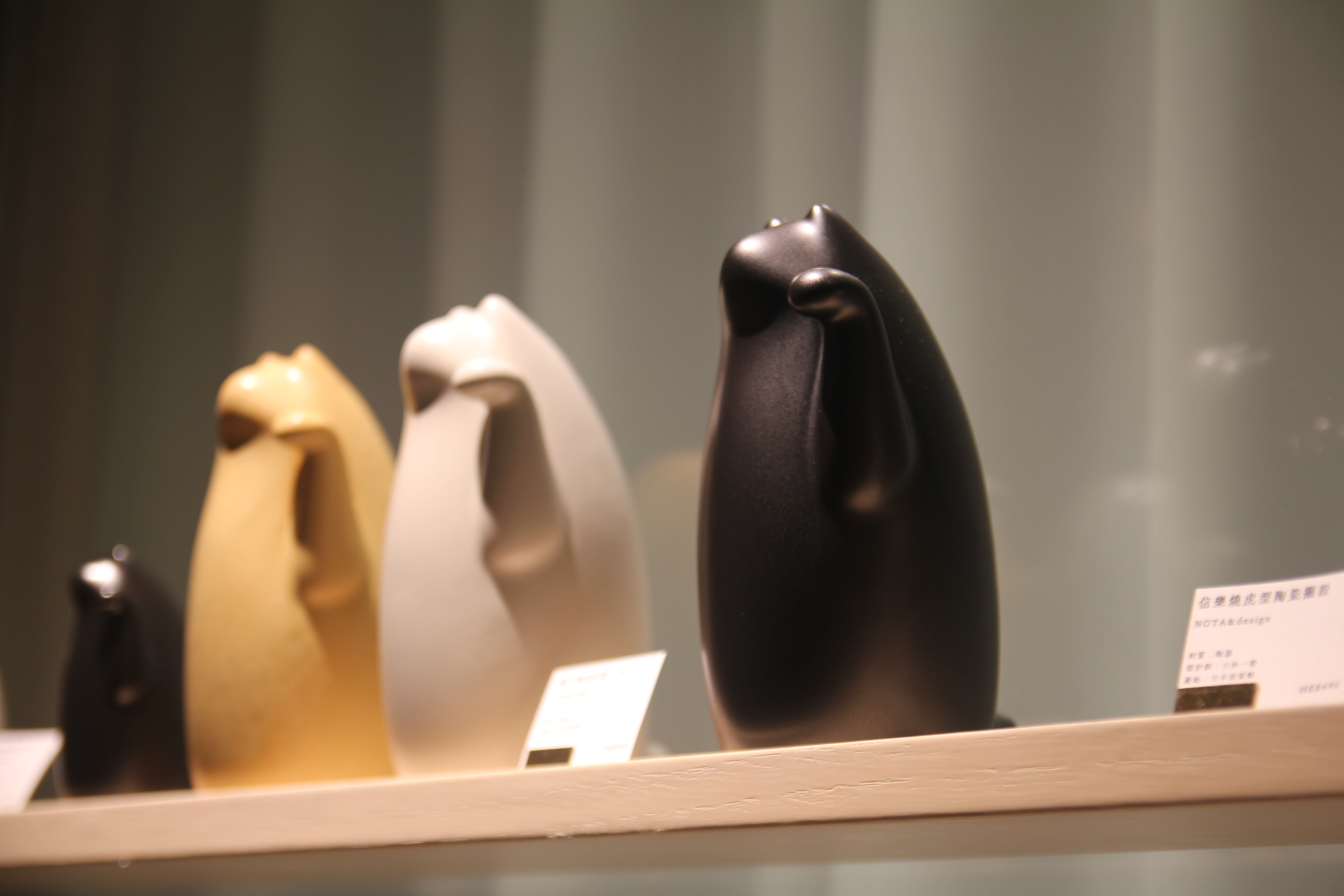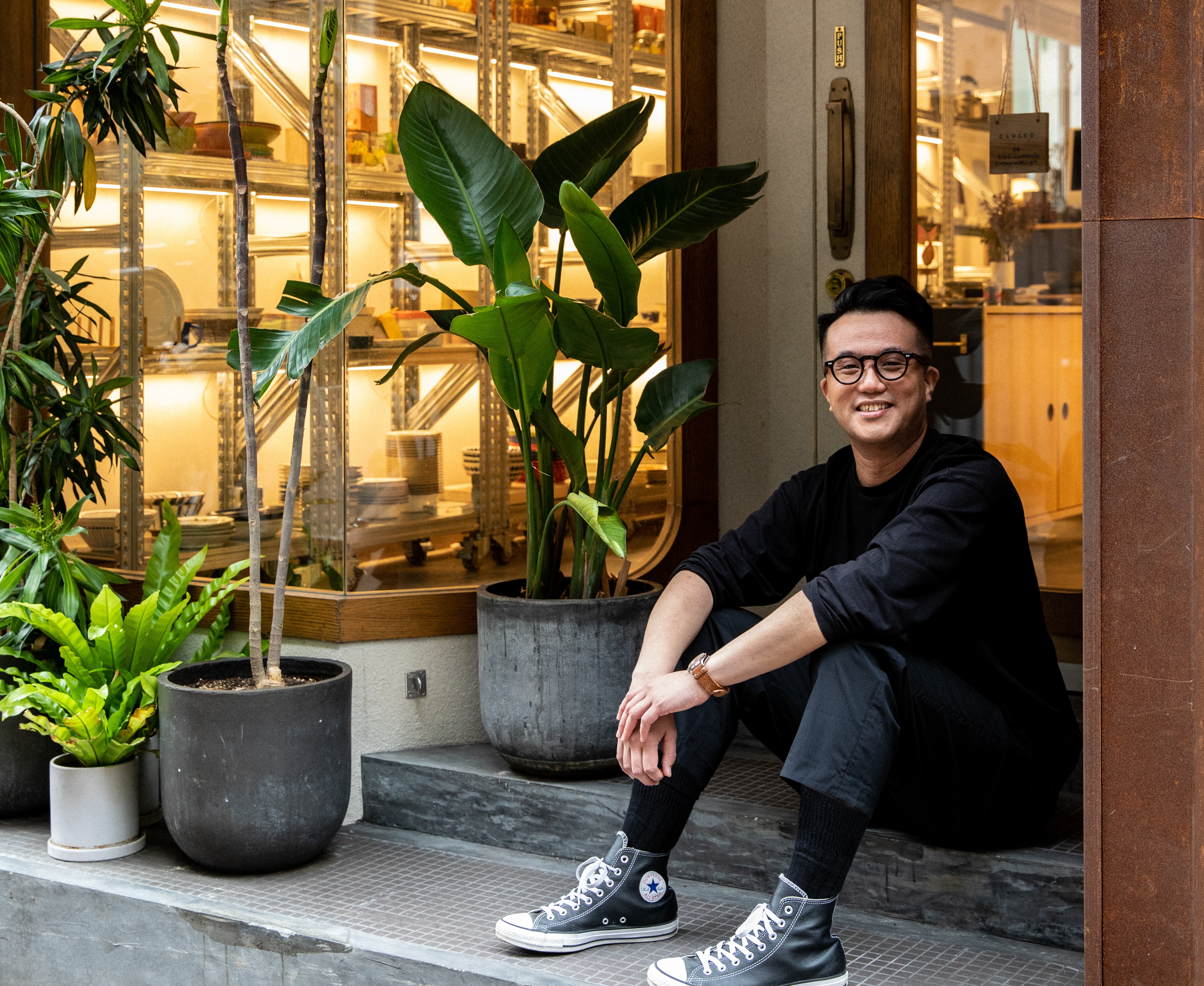Leisure & Culture #86
Designers’ grounded dream commaa & HINT.
Otto Ng & Keith Chan

Text: TL ling
Translated by: Joel Wong
Photo: TL Ling & Interviewees
If you take a closer look, there are a few ground-floor shops run by designers that have emerged in recent years. Notable ones include "Objective" (now seized business) in Sheung Wan, "MIDWAY" in Sham Shui Po, and "HINT." in Sai Ying Pun, where the lease has expired. But Keith Chan, interior designer and shop owner of HINT., has announced that he will soon relocate the shop to a new and more spacious location. He also spoke highly of the ground-floor coffee shop "commaa" in Sheung Wan, owned by his architect friend Otto Ng.

The co-founder of LAAB Otto Ng.
The "LAAB," co-founded by Otto handled numerous large-scale architectural design projects. "LAAB is the holy grail for fellow young designers. A freshly graduated colleague of mine used to think Otto wasn’t easygoing. However, after meeting Otto at commaa, he immediately realized that's not the case." Keith said. The general public in Hong Kong often perceives design as very distant due to their sparse understanding. Otto and Keith opened ground-floor shops to bridge this gap, bring design closer to the public, and provide a space for designers to gather and communicate.
From office space to coffee culture area
commaa started operating six months ago and coexists with the LAAB office under the same address. Both names contain two letters, as symbolizing "art" and "architecture," which are the motto and creative core of LAAB. LAAB is involved in various fields, such as architecture, public art, hotels, and restaurants. It has contributed to the design of the K11 MUSEA shopping mall and the "Harbour Kiosk" on the Avenue of Stars in East Tsim Sha Tsui.
Inside commaa, you can easily spot the books displayed near the entrance. Otto explained, "We have books about coffee, architecture, and those related to the activities held at commaa. For example, from June to July, the select shop MIDWAY hosted a "Journey of Japanese craftsmanship" pop-up store, so we feature related reading.

Next to the bookshelf is a built-in digital menu.(Image:commaa Instagram )
The bookshelf is a doorway into LAAB’s office of 50 employees. Otto explained the concept of merging the shop with the office, "The office is a private space, and we make part of the office as a coffee shop, turning it into a public space. After daily shop hours, colleagues can return to this place and have dinner." He pointed out that all colleagues at LAAB are coffee lovers; all the drinks served in commaa are approved by the staff here. Otto hopes the coffee shop will nurture into a cultural space to hold regular events and exhibitions.
The large white wall in the store facilitates the display of exhibits, and the lighting is designated: "It is at art museum level, and the M+ Museum also uses the same setup." Hong Kong has plenty of coffee shops, but Otto wants commaa to be more relaxed and let the public get the taste of art and architecture through drinking coffee.

commaa integrated a café and exhibition area.

Select shop MIDWAY hosted a pop-up store in commaa.
Guided tours for kindergarten kids
commaa is located on Po Yan Street in Sheung Wan. Otto stated that there are many art organizations nearby. Some of them are LAAB's partners, along with other designers, who like to visit commaa. The place expects visitors from fellow designers, artsy young people, and residents in the neighborhood. Otto is surprised that even the elderly are their valued customers, there is a hospital nearby, and many elderly visits commaa after their appointment. They said the coffee shops around are too stylish for them, and they dare not go in. commaa is probably more friendly.
Otto mentioned that mothers from a nearby kindergarten visit commaa after school and let their children enjoy their babyccino. That opened the doorway to discuss potential cooperation between the kindergarten and commaa and led to a series of guided tours taking the kindergarten students to visit LAAB. Young children in Hong Kong have no idea about architects, but commaa provides a small window for such education.
This year, LAAB is celebrating its 10th anniversary and is strengthening the bonding with the community by opening commaa. Otto said that the company has been relocated multiple times over the years, including in a commercial building that lacked support from the arts and cultural community and had limited public visibility. Due to the costly rent in Hong Kong, ground-floor shop rents are particularly higher than those upstairs. Otto believes that the current location of LAAB and commaa does not come easy. As the location is not on busy streets the rents are more reasonable. In countries like Taiwan, Japan, South Korea, Europe, and the United States, design studios are often situated in buildings with office on one side and the shop on the other. “Just this condition is kind of rare in Hong Kong.” Otto said.

LAAB organized guided tours for kindergarten kids to understand the working environment of architects.

LAAB and commaa have red brick walls, adding style to the street corner.
The store is a dream and also publicity
Keith, the founder of the interior design studio Hintegro, and Otto said many design studios also run small shops. Keith envies the abundance of independent ground-floor shops in Japan, particularly in areas like Hachioji and Mitaka, although not necessarily in the bustling streets of Shinjuku in Tokyo. He cited an Australian architect friend who lived in Japan and opened a ground-floor coffee shop called MIA MIA in Tokyo's Toshima City, highlighting how the shop interacts with the community.
Keith expressed his dream shop but stressed the difficulty of implementing such an idea in Hong Kong due to expensive rent. He even pondered how many items he would need to sell to cover the rent if he were to open a select shop. Despite the challenges, Keith's actions have spoken louder than his words, as he has been running the HINT. select store in Sai Ying Pun since 2022 until it closed a few months ago. Keith plans to move the shop to a new location, intending to integrate his studio and shop all in one place.

Keith Chan, founder of Hintegro, picture taken at the storefront of HINT.
HINT. was once located on Second Street in Sai Ying Pun, surrounded by residences and restaurants, attracting much foot traffic. Keith, the owner, initially hesitated to invest in opening a physical shop; however, he was encouraged by his girlfriend, who works in marketing, to see the value of having a physical storefront would do good to his profile. Keith believed that having a store like HINT. was an effective way to promote his work, unlike traditional advertising. HINT. offers lifestyle products from Hong Kong and worldwide, all curated by Keith, and the store's interior design reflects his style and preference. Keith primarily works on residential design projects and sees the store as an opportunity to connect with the public, sometimes leading to new business opportunities.

HINT. operated at Sai Ying Pun for two years.
Down to earth with Ground-floor Shop
Keith intended for the shop to be a place for fellow designer friends to gather and hold activities such as exhibitions and cultural events. He finds it meaningful, like when he collaborated with a child psychologist for a talk. They became friends after Keith took on a job and designed his home. The talk covered design, education, and children's creativity. The audience included mothers who are designers, and they raised issues about educating their children as well.

HINT. sold exquisite products from all over the world.(Image:HINT. Instagram )

The interior of HINT. at Sai Ying Pun.(Image:HINT. Instagram )
Looking back on the activities held in the shop over the past two years, Keith expressed his growing excitement with a grin, and he enjoys sharing his knowledge through writing columns and teaching at the university. He hinted he would look for a new spot for the shop to continue such acts, but no further details for now. Keith mentioned that it would be more spacious than the previous one. While it's uncommon for Hong Kong designers to run “physical shops”, Keith emphasized the importance of collaboration among younger-generation designers and bridging communication with the public and veteran designers. He believes that design should not be something so “stuck up” and hopes to engage people in understanding Hong Kong from a design perspective through a down-to-earth approach.


